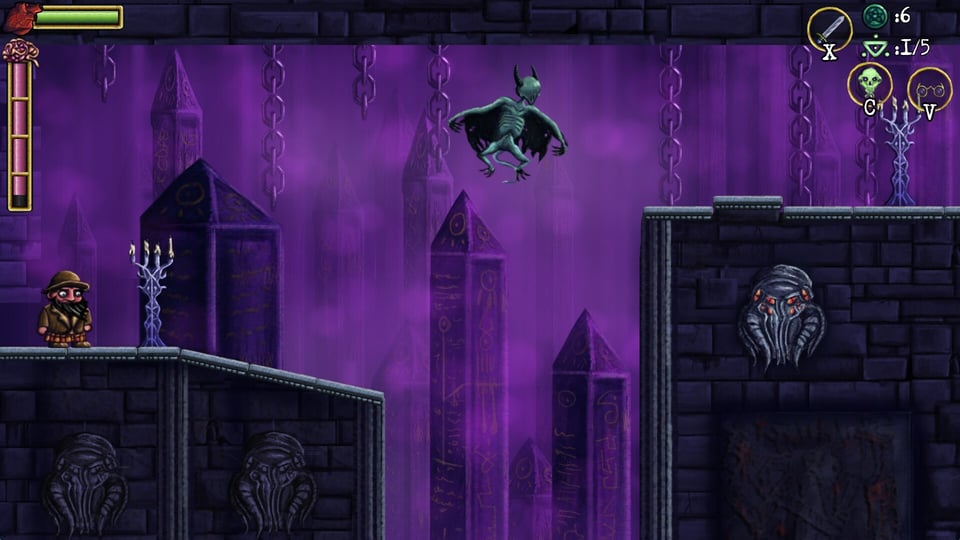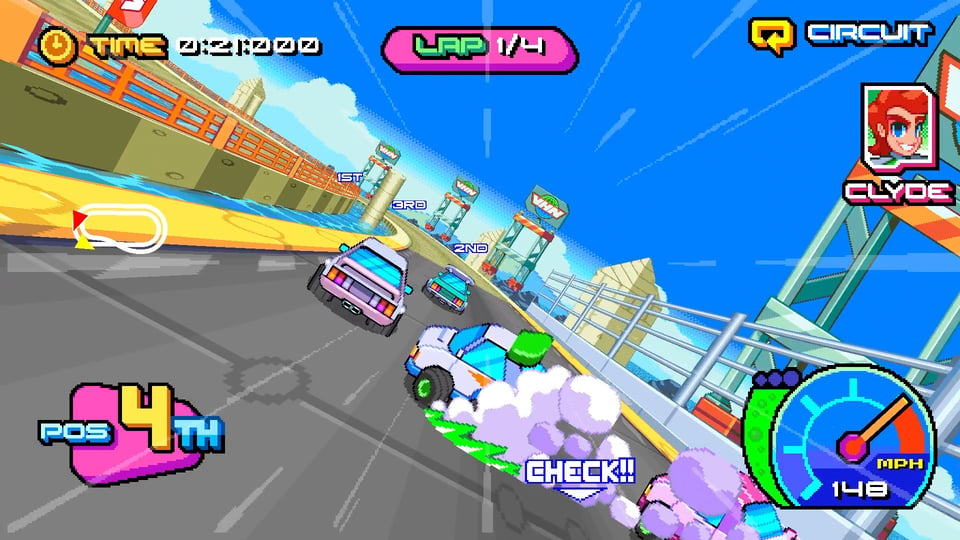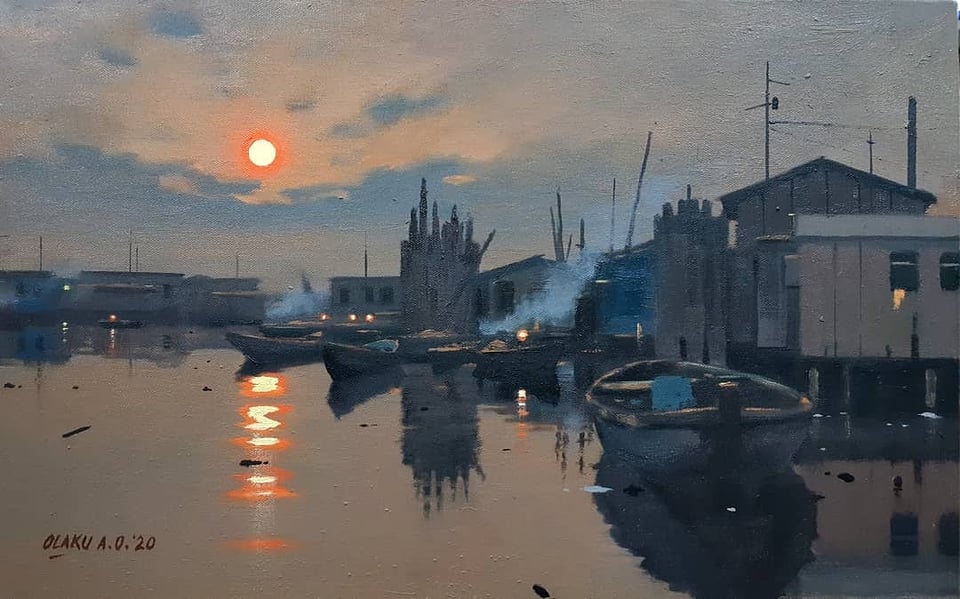The Pixel Prophet #11
New subscribers, CSS tweaks, Mozilla layoffs, text-to-video AI, indie games galore, and more in this Pixel Prophet edition!

First off: Welcome, new subscribers!
After publishing my video on the making of an issue of the Pixel Prophet, an unexpected number of people subscribed to it and elevated the Prophet into the territory of the paid plan despite my best efforts to deter them.
Kidding aside, I am happy that you are here and I hope you enjoy the Prophet! Be sure to check the archive and browse previous issues, the stuff doesn’t age.
The new plan also allows me to modify and tweak the Prophet’s CSS to make it look as best as it can — at least on the web, what happens in your inbox is anyone’s guess.
I’d also want to thank the kind souls who pitched in at ko-fi, and donated to ensure the Prophet’s sustainability — at least for this month. Thank you all also for spreading the word about this newsletter and helping out this way. You’re all breathtaking!
— Phil
News & Updates
- Mozilla? More like Moz-AI-lla! In a rather disheartening move, Mozilla Corp laid off 5% of their staff, and refocused their investments on their One Good Browser™ that kept hemorrhaging market share. They also plan to “bring trustworthy AI into Firefox,” whatever this means. (Source: TechCrunch)
- Next step in text-to-video generative AI. OpenAI launched their AI model Sora last week which produces almost convincing-looking videos from a text prompt. While Schrödinger’s wolf pups evoke fever-dream memories in me (thanks, OpenAI, could’ve done without), this technology opens the floodgates for convincing-looking fakes and misinformation. But us game devs know: The remaining 10% are harder and take longer than the first 90%.
Games
Big and small, old, and new, indie and very indie.
Axiom of Maria
INDIE • S(e)oul-Punk

The Korean developer with the beautiful German name Studio Ganzheit (“studio completeness”) released a game they had been pouring their passion into as a solo dev for over three years and– just wow! ►Axiom of Maria looks stunning. Not just in stills, especially in motion.
You play as Kay who’s “trying to get back her family from an AI in Seoul” in a very cyberpunky, Akira-inspired neon-dystopia; the lavish interiors and protagonist’s character design remind me of ULTRA ULTRA’s sci-fi stealth game ECHO (2017). Though, Axiom of Maria’s focus seems to be sword combat; in the trailer, it’s fast, fluid, and damn stylish—strong Platinum Games vibes all around!
If that speaks to you, why not take the demo for a spin? Currently, 100% of the user reviews are positive.
Lee Carvallo’s Putting Challenge II
INDIE • Not Your Average Fangame

Simpsons fans might remember Marge’s attempt at gifting Bart a fun videogame in the form of the boring “Lee Carvallo’s Putting Challenge” (Season 7, Episode 11). That episode even shows “gameplay” that captures the excitement of most golf simulations I played. While there has been a simple fan recreation of that game already, that’s not the one I want to talk about today.
Tom Lockwood’s ►Lee Carvallo’s Putting Challenge II plays in a whole different league. For one, it’s not just retro-looking, it’s an actual GameBoy game that you can pop in your original gray brick (or Analogue Pocket) and it plays. It looks as if it came out the same year the Simpsons episode aired in 1995.
It’s a delightful, carefully designed narrative point-and-click adventure with the titular character as our protagonist. Simpsons fans will spot countless Easter Eggs but you don’t need any Simpsons knowledge to progress in this memorable little story. The less said about it, the better but trust me: It’s very good!
Eldritchvania
INDIE • Lovecraft-Like

Okay, my tag-line is not even half as fitting as the game’s actual title, ►Eldritchvania, a rare example of an indie game with a perfect name (in case you are wondering, other titles I deem near perfect are Downwell (2015), Cut the Rope (2010), and maybe Minecraft (2011), but I digress).
Eldritchvania has you “explore unearthly ruins, solve arcane riddles,“ and fight “indescribable horrors that lurk amidst the forgotten depths of our world.” The game’s two developers, Anton Johnsson from Sweden, and Nathan Auckett from Australia, released a very intriguing blend of Lovecraftian horror with exploration, puzzle-solving, and combat. The gameplay seems strongly influenced by the faux-MSX game La-Mulana (2006), an early indie gem.
Best of all, Eldritchvania is free on Steam and itch.io and actively being tweaked by the devs. Be sure to leave a review! (via Konstantinos Dimopoulos on Twitter)
Regency Solitaire 2
INDIE • Grand House of Cards

Move over, MS Solitaire! Grey Alien Games’ ►Regency Solitaire 2 adds so much to the seemingly simple formula in terms of gameplay and polish, that it feels outright wasteful. The card levels are interspersed with a graphic novel story that has you “tour must-see locations around Britain” with “sumptuous art and [a] romantic storyline.”
If you’ve played the first game, it’s very likely to meet familiar characters, though not required to enjoy both game and story. Best of all: The game releases this Thursday!
Victory Heat Rally
INDIE • Sprited away [sic]

Current racing games are too realistic for you? They aren’t fast enough? Colors not vibrant enough? You prefer lightning-fast, sprite-based visuals? If not, you wouldn’t still be reading this paragraph so I cut right to the chase: The game dev brothers of Skydevilpalm have the incredibly fast, colorful, stylish, and masterfully-pixeled ►Victory Heat Rally in the works. The trailers simply look stunning and promise what looks like the best arcade racer the nineties never had. While there’s no release date yet, you can play the game’s demo.
Phantomas III — The Return of Brok
RETRO-INDIE • From Spain with Love

Last year, Commodore 64 dev Antonio J. Santos (“SrHead”) released a complete Spanish translation of the C64 version of Beam Software’s seminal The Hobbit (1982). This experience proved engrossing enough to go all in: Currently Antonio develops their first game “entirely in the Commodore 64 assembler”, ►Phantomas III — The Return of Brok, seemingly a direct sequel to the Phantomas (1986) games by the Spanish publisher/developer Dinamic Software that originally came out for the Spectrum. Yet another game I showcase here that’s still in development for quite a while, but also another with a playable demo; all you need is a C64 (emulator).
Programming & Game Dev
Tools, resources, wisdom, humor.
ART • Chaos Grants — A great opportunity for creators: The Chaos Computer Club is giving out art grants! Let me quote blinry’s toot in full:
If you’re an artist/writer/creator of whatever type, you can apply for 420–4200 EUR, to work on your visions and utopias for the Chaos Community! ✨
See 42.ccc.de for details. Application deadline is already the 2024-02-29! ⏰
If you have more questions, join the @callforstories “office hours” next Thursday!
BUSINESS • Hiring Practices — I’ve seen many tips for people who apply for software engineering positions, but hardly any for the person interviewing the candidates. Anders Borch ►shares his perspective and experience from the other side of the table, how to “be a non-toxic manager. Make your company look good during the interview process. Get better candidates.”
PRIVACY • Cookie Banners — If you browse the web in the EU, you’re probably familiar with all the banners that pop up informing you that the site wants to store cookies and uses the best of dark patterns to have you misclick on “Agree to All”.
If you are using Firefox (a.k.a. The Best Browser™), it has a hidden setting that lets you auto-reject these cookies. For that, enter about:config in the address bar, then search for cookiebanners.ui.desktop.enabled, and toggle that to true. That should enable the “Disable Cookie Banners“ checkbox under Settings > Privacy. Tick it and cookies will be auto-rejected in Private Mode, though “only on supported sites”. Better than nothing. (via Michael Veale on Mastodon)


RESOURCES • Open Source Apps — Two weeks ago, Mastodon user Em (who is looking for work) asked the Fediverse about their absolute favorite open source app, only one allowed. At the time of writing, her toot had over 90 replies of hidden gems. Well, once you’ve scrolled past obscure code/text editors nobody has ever heard of.
For example, Six Grandfathers Mountain suggested the open-source podcast manager for Android, AntennaPod, or Zotero, a “free, easy-to-use tool to help you collect, organize, annotate, cite, and share research” suggested by Markus Ojala.
RESOURCE • Button Prompts — Quicktime events need them. Menus need them. And you definitely need them for cert*. Painting all those different little buttons for all consoles, controllers, and systems can be daunting and time-consuming.
“cert”, short for the certification process when submitting a game to a console manufacturer who tests it for compliance to their ecosystem, incl. button prompts.
That’s where Yukari “Shinmera” Hafner’s ►PromptFont comes into play. She designed a font (both .ttf and .otf) with hundreds of glyphs for any button-press prompt imaginable (there are even icons for dice!). If that helped your game dev, you should Press [F] to play respects by dropping a few bucks on her itch.io page.
A few years back I made a similar font, Console Wars, but it’s not as packed as Shinmera’s font.
AWARD • Lifetime Achievement — Think of the GDC what you will, and I certainly have some thoughts about how it changed since the early Crawford days, but I can’t agree more with their decision to award the acclaimed ►Yoko Shimomura their Lifetime Achievement award.
Even if you haven’t heard of her before, you certainly have heard her music! She started making a name for herself working at Capcom in the late 1980s, contributing to the soundtrack of Final Fight (1989) with Manami Matsumae of Megaman (1989) fame. Yet her iconic songs for Street Fighter II (1990) secured her place in gaming history. She went on to compose for dozens more games, such as Super Mario RPG (1996), Parasite Eve (1988), and countless Kingdom Hearts titles for over 20 years, among many others.
下村さん、おめでとうございます!

ZINE • Dankeschön! — I remember zines (self-published indie magazines) being visual abominations, frankensteined together from typewritten or longhand pages, accompanied by drawings or photos. Copied beyond recognition, held together only by two stalwart staples (if you were lucky) and good intentions, yet overflowing with pure and unbridled wonderful passion from their editors.
A lot has since changed. The Dank Zine, for example, is a professionally laid out and typeset experience. Showcasing articles, interviews, and art, it appears like a colorful joy to page through.
What hasn’t changed is the passion for the subject matter by the editor, AnnK who is “a retro gaming enthusiast with MSX2 skills. She’s the creator of Dank Zine, a magazine celebrating fan art and articles centering around retro gaming.”
To whet your appetite, there is also the ►Dank Mini Zine, a small, digital appetizer, “almost like a TV guide” for the main publication. Check it out, I’m sure you’ll enjoy it!

GAME JAM • Watt’s that? — Friends, you know I love game jams. They are a great opportunity to step out of your comfort zone, be part of a community, and try some new approaches in your game dev. The one I find very interesting right now is Chris Waldon, Shauna Waldon, & Andrew Thorp’s ►Watt-Wise Game Jam running from March 22nd to April 22nd.
In a world where state-of-the-art games gobble up electricity like there’s no tomorrow (almost literally), this game jam challenges you to “[b]uild delightful games that use as little energy per second as possible in order to make games and computing more sustainable and to discover new directions for software aesthetics”. I absolutely dig this idea, especially because I feel software has grown needlessly wasteful because of the old understanding that “CPUs get faster each year anyway, no need to optimize”.
To get started, have a look at watt-wiser on GitHub to help you measure and visualize energy consumption on your computer.
Correction: A previous version of this article incorrectly named Aymeric Mansoux as the initiator of the Watt-Wise jam. However, according to the footer at wattwise.games, it was started by Chris Waldon, Shauna Waldon, & Andrew Thorp. Aymeric Mansoux was the one whose toot I saw about it.
ARTICLE • Indie Horror — Game designer, artist, zine-maker (and so much more!) Nathalie Lawhead posted on their blog a post with the enticing title Backrooms, Liminal Spaces, And The Subliminal Menace Of Loneliness in Indie Horror Games showcasing and examining many examples through a game designer’s lens with lots of links to other beautiful, terrifying dark hallways. Also, I love how their blog makes my mouse pointer look.
HOMEBREW • Resorting to WiiUlence — Jacob McGowan a.k.a. The Dev Atlas shared a highly entertaining devlog of how he managed to get a homebrew game running on Nintendo’s ugly duckling, the WiiU. It’s not impossible, but almost it seemed but somehow Jacob pulled it off! Here’s part 2 and part 3 if you want to keep following this wacky journey.
RETRO • Stage is set for DOSBox — There is a new version of ►DOSBox Staging, “a modern continuation of DOSBox with advanced features and current development practices” that adds additional features to your existing DOSBox. Release 0.81.0 boasts features such as “accurate per-scanline emulation and double scanning in all VGA, SVGA, and VESA modes” by default, 3dfx Voodoo 1 support, and CRT emulation. (via Bernd Kilga on Mastodon)
GAME DEV • It’s about time — Eniko Fox, co-founder of Kitsune Games, dropped some great advice, especially helpful when you’ve just started on That Next Project of yours:
GameDev protip: Always have a static Time class (or singleton) that contains:
- total game time
- elapsed game time this frame
- total real time
- elapsed real time this frame
The split between game and real is especially important if you ever introduce time speed effects.
Introducing the game/real split as early as possible in your project will force you to pick the correct one even if it never matters, whereas having to go back and decide everywhere in your codebase later on is a nightmare.
(original toot. As usual, there’s more knowledge in the replies)
LEGO • Interface Design — Did you play with Lego too? I especially loved the blocks with painted-on consoles and screens that came with spaceship sets. Back in 2020, George Cave a.k.a. Interaction Magic classified 52 of them and seriously looked at Lego’s design language to “learn the basics of physical interface design” in this ►blog post. (via James S. Aaron on Mastodon)

Art & Inspiration
Art, science, and other inspirations that left an impression on me
Art gives a microphone to quiet things.
Every day you pass a dozen beautiful moments without noticing. An artist’s job is to notice, to record, and to share.
Art exists to remind you every day about the beautiful parts of being alive.
Don’t outsource that shit to a computer.
— Jon Neimeister on Twitter
Paintings by Nigerian visual artist Abiodun Olaku




Pixel’s Mixed Bag
What I’ve been up to, posts, random thoughts, and stuff that doesn’t fit in anywhere else.
◾ I posted a video of the Making of the Pixel Prophet early in February as part of my “low-effort video production month”. I exerted more effort than anticipated but I am also very happy with the result. Please give it a ►watch, if you’re interested.
◾ I recreated the original mainframe Tetris (1984), as some of you might already know, and published a video on how that has been going as well. I am also wearing a Starfleet uniform in that one.
◾ If you speak German, and listen to Radio FM4, you might know about the Spielekammerl Show, their weekly variety gaming stream. This Thursday I co-host the show with Robert Glashüttner about everything Tetris. Spielekammerl Show, 22. Feb at 17:00 on twitch.tv/radio_fm4.
◾ Did you know that Tetris (1989) on Game Boy fits in a tiny blob of 32 KB ROM in the cartridge; graphics, music, multiplayer, everything? Either way, now you do.
}

Add a comment: